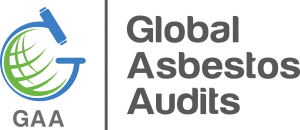Asbestos Solution
Global Asbestos Audits has developed an exclusive system for providing the total Asbestos Solution for their clients. The Asbestos Audit “Solution” has evolved to satisfy ALL the required compliance needs of the Safe Work Australia Code of Practice 2011 and the National Code for the Management of Asbestos in Workplaces, (including Maritime Industry) and ALL State and Territory regulations. Global Asbestos Audit provides a National and overseas service standard second to none.
Global Asbestos Audits provides the complete “Asbestos Solution” as required by the above-mentioned codes and regulations;
- The Asbestos Audit & Asbestos Register
- Your Asbestos Management Policy & Facility Management Schedule – Site-specific
- Your Staff/Tenant Handbook
- The Staff/Tenant Induction Sheet
- The Asbestos Controllers Guide
- Work request & work completion Forms
- Action Plan
- Draft Company Statement
- Draft Work Method Statement
Hazardous Materials
Unfortunately, there are hundreds of types of hazardous materials still present throughout Australian built environments including silica, formaldehyde, man-made mineral fibre, wood preservatives, mercury, cadmium and many others. Asbestos, lead and PCBs are the most common materials presenting risks to human health, but many others can be found as building materials and finishes, and within equipment and plant.
GAA building assessors are able to offer specialist advice and services for a wide range of hazardous materials. If you have concerns about a particular product or material, need advice about the types of hazardous materials which may be present in your property, or how to manage health and environmental risks, please call us to discuss how GAA can help.
Polychlorinated Biphenyls (PCBs)
PCBs are oily liquids or solids, colourless to light yellow, with no smell or taste. They have been commercially manufactured since the 1930’s and used in hundreds of applications due to their non-flammability, chemical stability, high boiling point, and electrical insulating properties. Common uses of PCBs are within electrical, heat transfer and hydraulic equipment; as plasticisers in paints, plastics and rubber products; in pigments, dyes and carbonless copy paper; and many other applications.
PCBs are non-soluble in water and build up in fatty tissues, which make it difficult for animals and humans to eliminate them from the body. PCBs are also known to accumulate in the above ground parts of plants, including stems, leaves and fruit. The United States Environmental Protection Agency (US EPA) has found clear evidence that PCBs have significant toxic effects, including effects on the immune system, the reproductive system, the nervous system and the endocrine system. Studies have also indicated that PCBs may be carcinogenic.
Benss provides PCB identification and risk assessment, management plans for PCB containing equipment still in use, and assistance for safe removal and disposal.
CFC and HCFC Refrigerant Gases
CFC (chlorofluorocarbon) and HCFC (hydro chlorofluorocarbon) gases have been widely used as aerosol propellants and refrigerant gases since the discovery of CFCs in the 1930’s. In the 1980’s it became widely accepted that both CFC and HCFC gases were causing depletion of the ozone layer and the subsequent Montreal Treaty, signed by 180 nations in 1987, sought to phase out their use. Exposure to CFC and HCFC gases has also been shown to cause adverse human health effects, particularly on the respiratory tract.
HFC (hydro fluorocarbon) gases are benign to ozone and are now in common use as an alternative refrigerant to CFCs or HCFCs. However, HFCs have a high greenhouse gas potential and significantly contribute to climate change. Handling, reuse and disposal of refrigerant gases is strictly controlled and licenced in Australia.
GAA provides refrigerant and halon gas identification and risk assessment, management plans for in use equipment, and advice on safe removal and disposal.
Lead Paints and Lead
Lead has been used in a variety of applications for thousands of years, as surface ore deposits are easily mined and processed. In recent times however, the adverse health effects of exposure to lead in drinking water, air, dust and soil have been well documented. Lead exposure affects nearly all bodily systems and can cause a range of health effects including to the nervous system, kidneys and physical development. The effects of lead on the unborn or young child are typically the most severe, as their body tissues accumulate the metal during growth. Lead in paint products is the greatest source of lead exposure in residential environments.
Today lead based paints are defined as those containing greater than 0.1% lead by weight. Until legislation was enacted in 1965, paint products contained up to 50% lead and paints sold between 1965 and 1992 contained up to 1% lead. Home renovations and decorating, particularly sanding, scraping and hot removal of old paint, are a leading cause of lead exposure.
Lead water pipes, roofing, flashing and paint products are still present within many Australian built environments today. Lead water pipes may still be present in homes built before 1940, although lead based solder was often used on plumbing systems until a complete ban on lead plumbing supplies in 1988.
GAA provides identification and risk assessment for lead products, in-situ lead product management plans and advice for safe removal and disposal.
